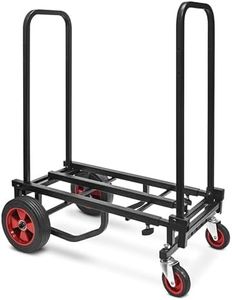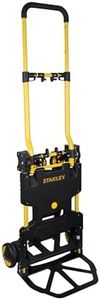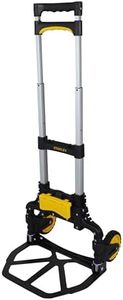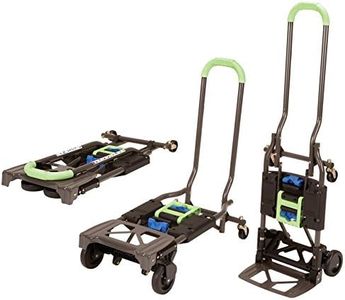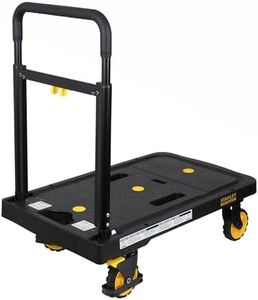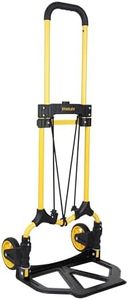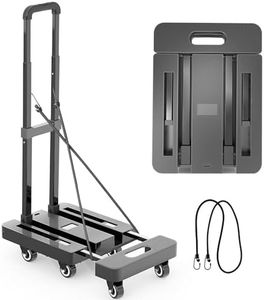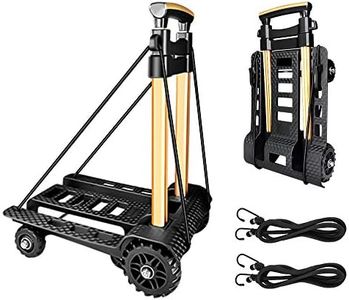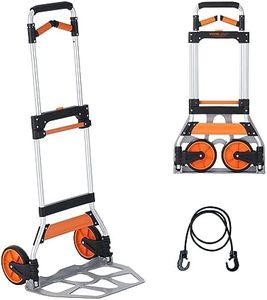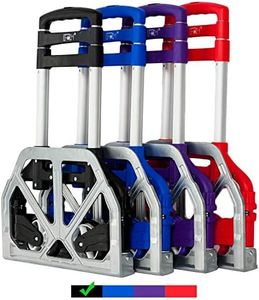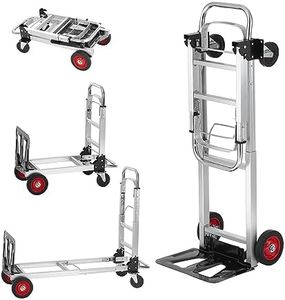We Use CookiesWe use cookies to enhance the security, performance,
functionality and for analytical and promotional activities. By continuing to browse this site you
are agreeing to our privacy policy
10 Best Hand Trucks
From leading brands and best sellers available on the web.By clicking on a link to a third party's website, log data is shared with that third party.
Buying Guide for the Best Hand Trucks
When choosing a hand truck, it's important to consider where and how you plan to use it. Hand trucks are helpful for moving heavy or bulky items with less effort, whether at home, in an office, or for work-related tasks. By focusing on a few key features, you can find a hand truck that fits your typical loads and working environment, making transportation much easier and safer.Load CapacityLoad capacity is the maximum weight a hand truck can safely carry and it's usually measured in pounds or kilograms. This is crucial because overloading a hand truck can make it unsafe and may damage the product. You'll generally find hand trucks rated for light duty (around 150-250 lbs), medium duty (250-400 lbs), and heavy duty (400 lbs and up). To pick the right capacity, think about what you most often need to move—choose a hand truck with a rating higher than your typical load, but don’t go for the highest capacity if you only need to move lighter objects, as heavier hand trucks themselves can be harder to maneuver.
Frame MaterialThe material of the hand truck's frame affects its weight, durability, and cost. Common materials include steel, aluminum, and sometimes composite plastics. Steel frames are very sturdy and good for heavy loads, but they make the hand truck heavier. Aluminum frames are lighter and easier to handle while still being strong, making them great for frequent use or lighter tasks. Plastic frames are the lightest and resist rust, but they're usually suitable only for lighter loads. Consider how much weight you need to move and how far or often you plan to carry the hand truck when picking the right material.
Wheel Type and SizeWheels can be solid or pneumatic (air-filled), and come in various sizes. Larger wheels (around 10 inches or more) roll more smoothly over uneven surfaces, stairs, or outdoor terrain, while smaller wheels (6-8 inches) are better for smooth indoor floors. Pneumatic wheels give more cushioning and handle bumps better, but require occasional maintenance. Solid wheels need no maintenance and are better on flat, hard floors. Choose wheel type and size based on the surfaces you’ll use the hand truck most, and whether you want to avoid maintenance.
Handle TypeHandles can be single, dual, looped, or ergonomically shaped. Single-handle or straight designs are common for lighter, compact models, while dual or looped handles offer more control, especially with heavy or bulky loads. Ergonomic handles improve comfort for long periods of use. The right choice depends on the size and shape of your usual loads, and your personal preference for comfort or control.
Base Plate SizeThe base plate (toe plate) is the flat part that slides under the load. Its size influences what you can move—a wider or deeper plate supports larger objects, while a smaller plate is lighter and suits compact items. For boxes or tight stairwells, a smaller plate is handier, but for bulky or odd-shaped loads, you’ll want a larger one. Match the base plate size to your typical cargo.
Folding MechanismSome hand trucks can fold down for easier storage or portability. If you have limited space or need to transport the hand truck in a vehicle, a folding design is very practical. These are most commonly found in lighter-duty models. Decide if portability is important for your needs before picking a folding or non-folding model.
